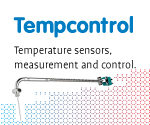Convection
There are two general types of convective heat transfer: 1. Natural: a heated fluid is usually lighter than colder fluid around it. The difference in density results in a fluid flow upward. As the fluid takes its thermal energy along, the heat is transferred. 2. Forced: a fluid can be displaced actively, e.g., by blowing or pumping, to transfer heat.
 |  |
| Natural convection Fluid motion is caused by the temperature differences themselves, i.e. buoyancy (gravity). | Forced convection Fluid motion is caused by external influences (fan, pump, etc). |
Heat transfer by convection is difficult to calculate and varies greatly with flow speed, geometry, surface conditions, etc. In general the heat transfer coefficient needs to be determined. This coefficient describes how much heat is transferred to (or from) the medium per unit temperature difference between the medium and adjacent surface. For linear convective heat transfer:

The numbers in the table below give a general idea of the amount of heat that can be absorbed (or delivered) by a convective flow. For example, a laminar water flow that is 1 K colder than the surface it flows past, will absorb around 1000 W per square meter of surface area. If the water is 2 K colder, it will absorb 2000 W/m2.
| Medium | Conduction | Heat transfer coefficient |
| Air | Natural convection | 1 – 10 W/(m2K) |
| Air | Forced | 25 – 100 W/(m2K) |
| Water | Forced, laminar | 500 – 1 000 W/(m2K) |
| Water | Forced, turbulent | 2 000 – 10 000 W/(m2K) |
